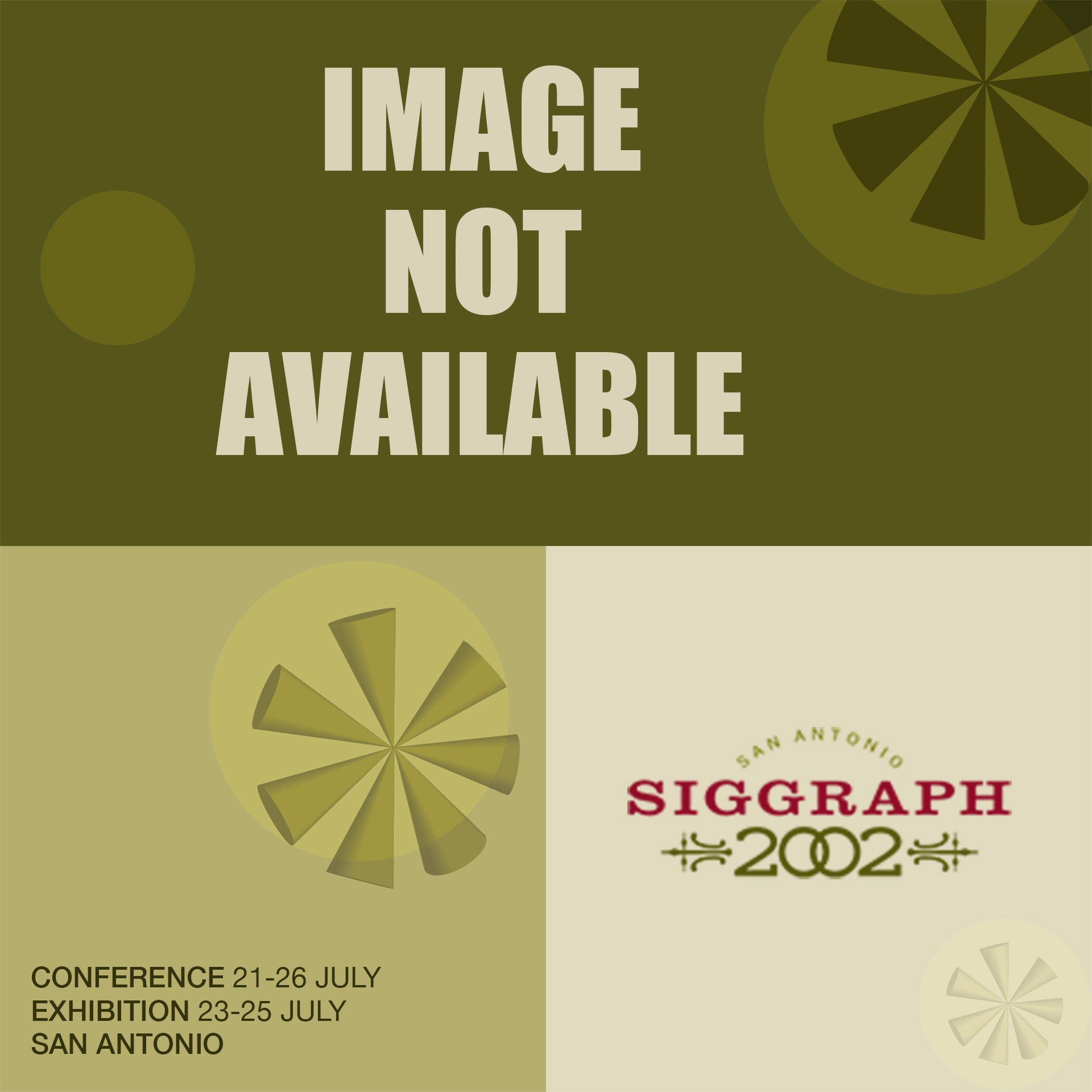“Yoda and Beyond: Creating the Digital Cast of Star Wars Episode II” by Campbell, Coleman, Marino, Tooley and Kačić-Alesić
Conference:
Type(s):
Title:
- Yoda and Beyond: Creating the Digital Cast of Star Wars Episode II
Presenter(s)/Author(s):
Moderator(s):
Abstract:
Computer graphics play a starring role in the production of Star Wars Episode II: ‘Attack of the Clones.’ This session focuses on creation of the digital cast of the latest prequel to the Star Wars saga. Industrial Light + Magic developed a variety of systems to make the computer-generated characters in this film work credibly with live actors, both in visual quality and physical realism. These systems also made it possible for digital doubles to stand in for actors in scenes that were either too difficult or too dangerous to shoot practically. In an effort to match the fidelity of motion of the computer graphics characters to that of their live-action counterparts, physically based simulation was used extensively throughout the production of this film. Multi-layered clothing, skin with underlying musculoskeletal structures, and the motion of rigid bodies each played a key role in imparting a new level of physical realism to the performance of computer graphics elements. Another challenge in employing this level of proceduralism is directing the resulting performances. This session presents an overview of the pipeline and systems used to produce Episode II, focusing on the specialization required to evolve technologies, deeply rooted in academic research, into effective filmmaking tools. The panel includes individuals who played key roles in development of key digital characters for Episode II.
Additional Information:
Notes from: http://research-triangle.siggraph.org/Special_sessions.html
Geoff’s speech:
It took approximately 6-8 weeks to model Yoda. Comparisons were made using examples from the original Yoda for lip syncing, facial deformation, tongue and eye movement. Discussions and observations were made on how the pupil deformed the eye and surrounding tissue/muscle. Video recordings from office colleague were also used as reference.
Zoran’s speech: (Graphics tool engineer)
Created tools to aid in the artist’s work flow. He discussed rigid body dynamics, specifically, storm trooper dynamics and the destruction of droids. He explained how various animations were affected by local animation and the role they played in the dynamic reaction. For example, the animator would complete a walk sequence and then apply a dynamic simulation on top of the animation. He also discussed the use of constraints and springs to allow better control and construction of complex animations.
Sebastian’s speech: (Research lead)
Disscussed self collision properties and vertex envelops as it relates to cloth simulations on characters. Clothing simulation and dynamics for the characters Dexter, Taun We and Lama Su were also elaborated upon.
James’s speech: (Technical animation director)
Main discussion addressed digital costumes, the installation and design of animation controls. He explained about the various factors that contributed to better cloth simulation. Examples included were: mesh resolution tailoring, stitching, layers, tacking, the use of painted weights to allow for better control of specific areas. He discussed bugs in earlier versions of the dynamic software and what effect they had on simulated animations. The main example pointed out concerned jewelry on different CG characters. The artist had a hard time getting control of specific items until the bug was fixed. He showed a blooper reel of animations illustrating the affects of the bug.
Rob’s speech: (Animation director)
Rob talked about getting the script two days before shooting and reading the part about Yoda’s fight scene. He ended up thinking about that scene for twelve months before starting production on it! He talked about lighting and different martial arts films used as reference for Yoda’s motions in the fight. One that stood out was Swordsman II.
Spider-Man: Behind the Mask
Panelists: Scott Stokdyk, Ken Hahn, Peter Nofz and Greg Anderson
Scott’s speech:
Discussion included the Goblin bombing, Spiderman’s home made costume and the roof top scene, compositing CG with real backgrounds, shot breakdown and motion control passes. A one-way street was painted to look like a two-way street. Simple colors were used for objects to aid in the production of this process. Video clips showing digital altered and real scenes were shown for comparison. A blooper reel was also shown.
Ken’s speech:
Discussed the importance of lighting used in CG when used in conjunction with real objects. The task of suspending disbelief and different techniques used to obtain the affect. Digital character setups, face and body scans were discussed. It took 3 1/2 months to complete the “hero bridge” shot. Other topics discussed were: the use of fat and tissue layers for Green Goblin character, blueprints, CAD data and motion reference for the Goblin’s glider, motion capture data and the deformation of the Goblin’s exo-skeleton and cloth layers.
Peter’s speech:
Discussed the costumes of Spiderman and the Green Goblin: the color and lighting, techniques used to match the actual costumes and to simulate the costumes properties, stitching, assigning UV’s, shader development, single multi-purpose shaders, texture maps, UV map intersections, coordinates system definitions and battle ravaged costumes. Spiderman’s home made costume addressed the following: cotton sweat suit, cloth shaders and cloth simulation. Green Goblin’s costume addressed the following: Molded plastic armor, metallic paint and color shifting.
Greg’s speech:
Discussed virtual environments, data acquisition, textures; both day and night, pan and tile textures. Other topics discussed were: the use of footage from real spiders for reference on constructiong Spiderman’s web, highlight and color, scale and resolution, reflections and caustics.





